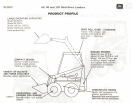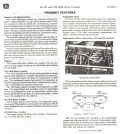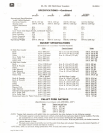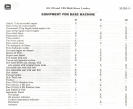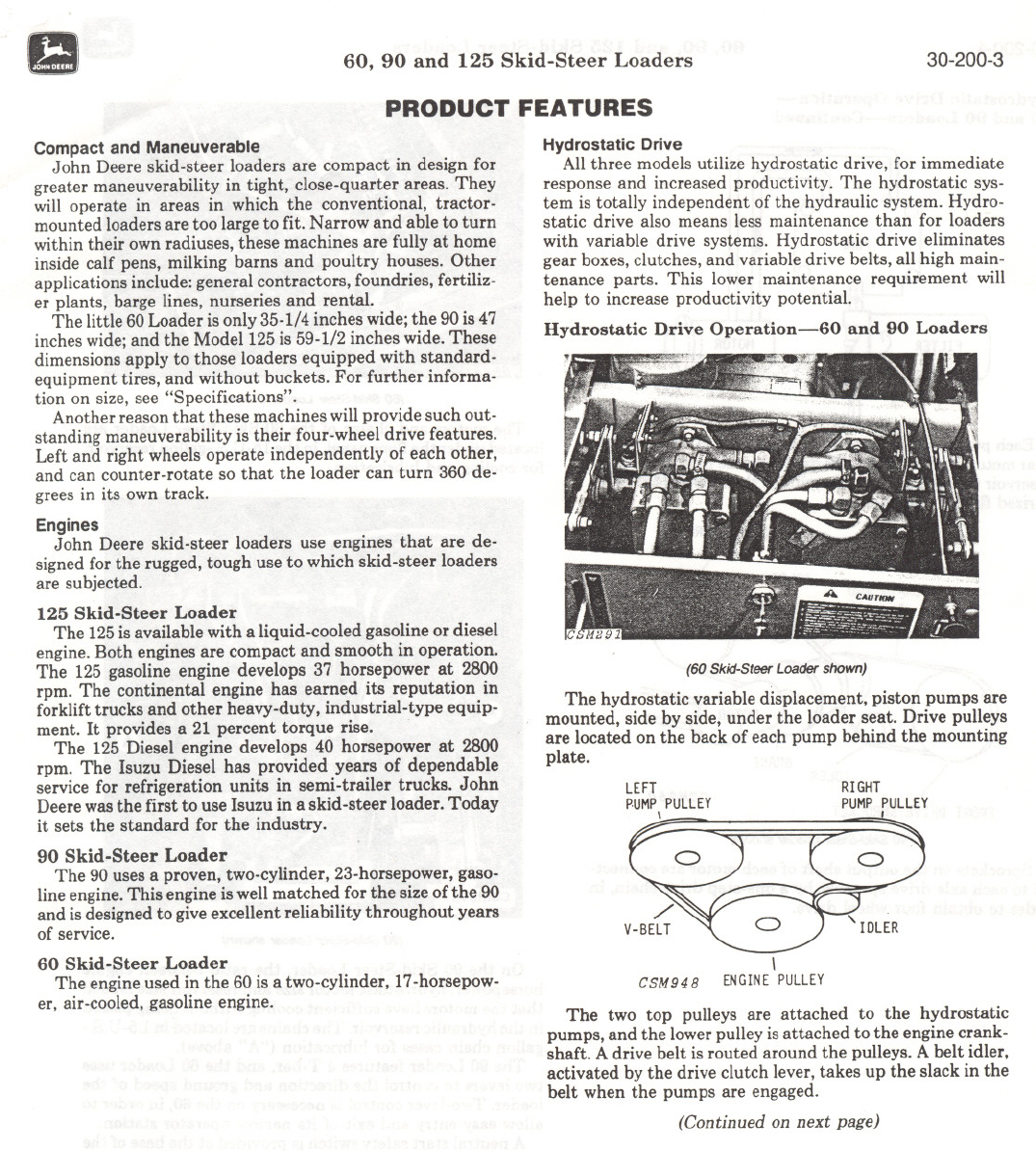
a
60, 90 and 125 Skid-Steer Loaders
30-200-3
PRODUCT FEATURES
Compact and Maneuverable
John Deere skid-steer loaders are compact in design for
greater maneuverability in tight, close-quarter areas. They
will operate in areas in which the conventional, tractor-
mounted loadersare too largeto fit. Narrow and able to turn
within their ownradiuses, these machines are fully at home
inside calf pens, milking barns and poultry houses. Other
applications include:general contractors, foundries, fertiliz-
er plants, barge lines, nurseries and rental.
The little 60Loader isonly35-1/4 incheswide;the 90 is47
incheswide;and the Model 125is 59-1/2 inches wide.These
dimensions apply to those loaders equipped with standard-
equipment tires, and without buckets. For further informa-
tion on size, see "Specifications".
Another reason that these machines willprovide suchout-
standing maneuverability is their four-wheel drive features.
Left and right wheels operate independently of each other,
and can counter-rotate so that the loader can turn 360 de-
grees in its own track.
Engines
John Deere skid-steer loaders use engines that are de-
signed for the rugged, tough use to which skid-steer loaders
are subjected.
125 Skid-Steer Loader
The 125is availablewith a liquid-cooled gasolineor diesel
engine. Both engines are compact and smooth in operation.
The 125 gasoline engine develops 37 horsepower at 2800
rpm. The continental engine has earned its reputation in
forklift trucks and other heavy-duty, industrial-type equip-
ment. It provides a 21 percent torque rise.
The 125 Diesel engine develops 40 horsepower at 2800
rpm. The Isuzu Diesel has provided years of dependable
service for refrigeration units in semi-trailer trucks. John
Deerewasthe first to use Isuzu in a skid-steer loader. Today
it sets the standard for the industry.
90 Skid-Steer Loader
The 90 uses a proven, two-cylinder, 23-horsepower,gaso-
line engine.This engine is wellmatched for the sizeof the 90
and isdesignedto giveexcellent reliability throughout years
of service.
60 Skid-Steer Loader
The engine used in the 60 is a two-cylinder, 17-horsepow-
er, air-cooled,gasoline engine.
Hydrostatic Drive
All three models utilize hydrostatic drive, for immediate
response and increased productivity. The hydrostatic sys-
tem is totally independent of the hydraulic system. Hydro-
static drive also means less maintenance than for loaders
with variable drive systems. Hydrostatic drive eliminates
gear boxes, clutches, and variable drive belts, all high main-
tenance parts. This lower maintenance requirement will
help to increase productivity potential.
Hydrostatic Drive Operation-60 and 90 Loaders
(60 Skid-Steer Loader shown)
The hydrostatic variable displacement, piston pumps are
mounted, side by side, under the loader seat. Drive pulleys
are located on the back of each pump behind the mounting
plate.
LEFT
P.UMP PULLEY
,
RIGHT
PUMPPULLEY
CSM948
\
ENGINE PULLEY
The two top pulleys are attached to the hydrostatic
pumps, and the lower pulley is attached to the engine crank-
shaft. A drive belt is routed around the pulleys. A belt idler,
activated by the drive clutch lever, takes up the slack in the
belt when the pumps are engaged.
(Continued on next page)




